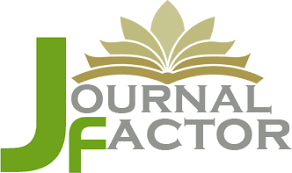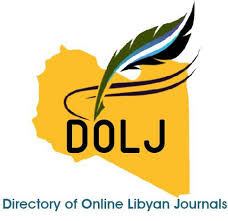First Clinical Case report of a Libyan Girl with Kabuki Syndrome and Literature review
DOI:
https://doi.org/10.54361/ljmr.v14i2.07Keywords:
Kabuki syndrome, Coarctation of the aorta, Biliary atresia, Advanced paternal ageAbstract
Kabuki syndrome is a rare autosomal disorder, diagnosed by presence of dysmorphic facies, mental retardation, short stature, skeletal and visceral abnormalities and cardiac anomalies. It is caused by a mutation in the KMT2D gene also known as MLL2 and in fewer cases due to mutations in the KDM6A gene. We report on the first description of a 2-year-old Libyan girl with Kabuki syndrome with typical facial features, skeletal abnormalities (fingertip foetal pads, brachydactyly, clinodactyly of the little finger, single simian crease, and abnormal lower limbs), cardiac anomalies, biliary atresia, single kidney and developmental dysplasia of the hips DDH. The patient also suffered from recurrent infections which has been noted in KS patients. The patient so far has shown normal neurological and behavioral development, but still has high liver enzymes
Downloads
References
Niikawa N, Matsuura N, Fukushima Y, Ohsawa T, Kajii T. Kabuki make-up syndrome: a syndrome of mental retardation, unusual facies, large and protruding ears, and postnatal growth deficiency. J Pediatr. 1981;99(4):565-569.
Kuroki Y, Suzuki Y, Chyo H, Hata A, Matsui I. A new malformation syndrome of long palpebral fissures, large ears, depressed nasal tip, and skeletal anomalies associated with postnatal dwarfism and mental retardation. J Pediatr. 1981;99(4):570-573.
Kasdon BD, Fox JE. Kabuki syndrome: diagnostic and treatment considerations. Ment Health Fam Med. 2012;9(3):171-179.
Cheon CK, Ko JM. Kabuki syndrome: clinical and molecular characteristics. Korean J Pediatr. 2015;58(9):317-324.
Ratbi I, Fejjal N, Micale L, Augello B, Fusco C, Lyahyai J, Merla G, Sefiani A. Report of the First Clinical Case of a Moroccan Kabuki Patient with a Novel MLL2 Mutation. Mol Syndromol. 2013;4(3):152-156.
Hughes HE, Davies SJ. Coarctation of the aorta in Kabuki syndrome. Arch Dis Child. 1994;70(6):512-514.
Banka S, Veeramachaneni R, Reardon W, Howard E, Bunstone S, Ragge N, Parker MJ, Crow YJ, Kerr B, Kingston H, Metcalfe K, Chandler K, Magee A, Stewart F, McConnell VP, Donnelly DE, Berland S, Houge G, Morton JE, Oley C, Revencu N, Park SM, Davies SJ, Fry AE, Lynch SA, Gill H, Schweiger S, Lam WW, Tolmie J, Mohammed SN, Hobson E, Smith A, Blyth M, Bennett C, Vasudevan PC, García-Miñaúr S, Henderson A, Goodship J, Wright MJ, Fisher R, Gibbons R, Price SM, D CdS, Temple IK, Collins AL, Lachlan K, Elmslie F, McEntagart M, Castle B, Clayton-Smith J, Black GC, Donnai D. How genetically heterogeneous is Kabuki syndrome?: MLL2 testing in 116 patients, review and analyses of mutation and phenotypic spectrum. Eur J Hum Genet. 2012;20(4):381-388.
Aref-Eshghi E, Schenkel LC, Lin H, Skinner C, Ainsworth P, Paré G, Rodenhiser D, Schwartz C, Sadikovic B. The defining DNA methylation signature of Kabuki syndrome enables functional assessment of genetic variants of unknown clinical significance. Epigenetics. 2017;12(11):923-933.
Niikawa N, Kuroki Y, Kajii T, Matsuura N, Ishikiriyama S, Tonoki H, Ishikawa N, Yamada Y, Fujita M, Umemoto H, et al. Kabuki make-up (Niikawa-Kuroki) syndrome: a study of 62 patients. Am J Med Genet. 1988;31(3):565-589.
Wessels MW, Brooks AS, Hoogeboom J, Niermeijer MF, Willems PJ. Kabuki syndrome: a review study of three hundred patients. Clin Dysmorphol. 2002;11(2):95-102.
Yoon JK, Ahn KJ, Kwon BS, Kim GB, Bae EJ, Noh CI, Ko JM. The strong association of left-side heart anomalies with Kabuki syndrome. Korean J Pediatr. 2015;58(7):256-262.
Digilio MC, Marino B, Toscano A, Giannotti A, Dallapiccola B. Congenital heart defects in Kabuki syndrome. Am J Med Genet. 2001;100(4):269-274.
Yuan SM. Congenital heart defects in Kabuki syndrome. Cardiol J. 2013;20(2):121-124.
Digilio MC, Marino B. What Is New in Genetics of Congenital Heart Defects? Front Pediatr. 2016;4:120.
Hartley JL, Davenport M, Kelly DA. Biliary atresia. Lancet. 2009;374(9702):1704-1713.
Vij M, Rela M. Biliary atresia: pathology, etiology and pathogenesis. Future Sci OA. 2020;6(5):Fso466.
Sangkhathat S, Laochareonsuk W, Maneechay W, Kayasut K, Chiengkriwate P. Variants Associated with Infantile Cholestatic Syndromes Detected in Extrahepatic Biliary Atresia by Whole Exome Studies: A 20-Case Series from Thailand. J Pediatr Genet. 2018;7(2):67-73.
Ng SB, Bigham AW, Buckingham KJ, Hannibal MC, McMillin MJ, Gildersleeve HI, Beck AE, Tabor HK, Cooper GM, Mefford HC, Lee C, Turner EH, Smith JD, Rieder MJ, Yoshiura K, Matsumoto N, Ohta T, Niikawa N, Nickerson DA, Bamshad MJ, Shendure J. Exome sequencing identifies MLL2 mutations as a cause of Kabuki syndrome. Nat Genet. 2010;42(9):790-793.
Masui D, Fukahori S, Mizuochi T, Watanabe Y, Fukui K, Ishii S, Saikusa N, Hashizume N, Higashidate N, Sakamoto S, Takato A, Yoshiura KI, Tanaka Y, Yagi M. Cystic biliary atresia with paucity of bile ducts and gene mutation in KDM6A: a case report. Surg Case Rep. 2019;5(1):132.
Crow JF. The origins, patterns and implications of human spontaneous mutation. Nat Rev Genet. 2000;1(1):40-47.
Armstrong L, Abd El Moneim A, Aleck K, Aughton DJ, Baumann C, Braddock SR, Gillessen-Kaesbach G, Graham JM, Jr., Grebe TA, Gripp KW, Hall BD, Hennekam R, Hunter A, Keppler-Noreuil K, Lacombe D, Lin AE, Ming JE, Kokitsu-Nakata NM, Nikkel SM, Philip N, Raas-Rothschild A, Sommer A, Verloes A, Walter C, Wieczorek D, Williams MS, Zackai E, Allanson JE. Further delineation of Kabuki syndrome in 48 well-defined new individuals. Am J Med Genet A. 2005;132a(3):265-272.
.
Chrzanowska KH, Krajewska-Walasek M, Kuś J, Michałkiewicz J, Maziarka D, Wolski JK, Brecevic L, Madaliński K. Kabuki (Niikawa-Kuroki) syndrome associated with immunodeficiency. Clin Genet. 1998;53(4):308-312.
Hoffman JD, Ciprero KL, Sullivan KE, Kaplan PB, McDonald-McGinn DM, Zackai EH, Ming JE. Immune abnormalities are a frequent manifestation of Kabuki syndrome. Am J Med Genet A. 2005;135(3):278-281.
Downloads
Published
Issue
Section
License
Copyright (c) 2020 Fathia A. Murabit, Khawla A. Etwebi (Author)

This work is licensed under a Creative Commons Attribution-NonCommercial-NoDerivatives 4.0 International License.
Open Access Policy
Libyan journal of medical Research (LJMR).is an open journal, therefore there are no fees required for downloading any publication from the journal website by authors, readers, and institution.
The journal applies the license of CC BY (a Creative Commons Attribution 4.0 International license). This license allows authors to keep ownership f the copyright of their papers. But this license permits any user to download , print out, extract, reuse, archive, and distribute the article, so long as appropriate credit is given to the authors and the source of the work.
The license ensures that the article will be available as widely as possible and that the article can be included in any scientific archive.
Editorial Policy
The publication of an article in a peer reviewed journal is an essential model for Libyan journal of medical Research (LJMR). It is necessary to agree upon standards of expected ethical behavior for all parties involved in the act of publishing: the author, the journal editorial, the peer reviewer and the publisher.
Any manuscript or substantial parts of it, submitted to the journal must not be under consideration by any other journal. In general, the manuscript should not have already been published in any journal or other citable form, although it may have been deposited on a preprint server. Authors are required to ensure that no material submitted as part of a manuscript infringes existing copyrights, or the rights of a third party.
Authorship Policy
The manuscript authorship should be limited to those who have made a significant contribution and intellectual input to the research submitted to the journal, including design, performance, interpretation of the reported study, and writing the manuscript. All those who have made significant contributions should be listed as co-authors.
Others who have participated in certain substantive aspects of the manuscript but without intellectual input should only be recognized in the acknowledgements section of the manuscript. Also, one of the authors should be selected as the corresponding author to communicate with the journal and approve the final version of the manuscript for publication in the LJMR.
Peer-review Policy
- All the manuscripts submitted to LJMR will be subjected to the double-blinded peer-review process;
- The manuscript will be reviewed by two suitable experts in the respective subject area.
- Reports of all the reviewers will be considered while deciding on acceptance/revision or rejection of a manuscript.
- Editor-In-Chief will make the final decision, based on the reviewer’s comments.
- Editor-In-Chief can ask one or more advisory board members for their suggestions upon a manuscript, before making the final decision.
- Associate editor and review editors provide administrative support to maintain the integrity of the peer-review process.
- In case, authors challenge the editor’s negative decision with suitable arguments, the manuscript can be sent to one more reviewer and the final decision will be made based upon his recommendations.












